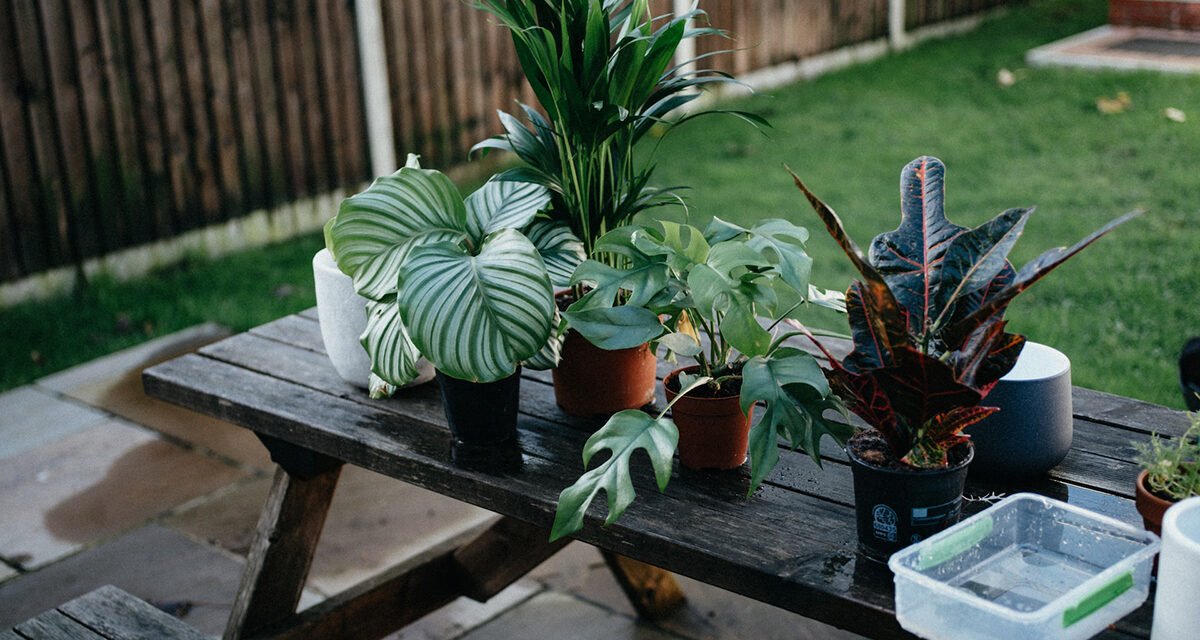As the days get longer and warmer, I can’t help but feel a surge of energy and excitement.
And guess what? Our beloved houseplants think it too! Spring is the perfect time to give our indoor plants the attention and care they deserve. In this blog post, I’ll share my secrets on sprucing up and rejuvenating your houseplants so they’ll flourish all season long.
1. Assess Your Plant’s Health
Check for Pests
The first step in spring care for your houseplants is checking for unwanted guests. Look for pests such as aphids, spider mites, or mealybugs. If you spot any, act quickly and treat your plants with a safe insecticidal soap or neem oil.
Look for Signs of Disease
Inspect your plants for any signs of disease, such as discolored leaves, mold, or rot. Remove any affected leaves or stems, and treat your plant with an appropriate fungicide if necessary.
Evaluate Sunlight and Watering Needs
As the seasons change, so do your plants’ sunlight and watering requirements. Ensure your houseplants get the right amount of light for their specific needs. Additionally, you may need to adjust your watering schedule to accommodate the warmer weather.
2. Time for a Trim
Prune and Shape
Spring is a great time to prune your houseplants, as they’re entering a period of active growth. Remove dead or yellowing leaves, and trim back leggy stems to encourage bushier growth. Some plants may also need shaping to maintain a pleasing appearance.
Pinch and Propagate
Take advantage of your plant’s spring growth spurt by pinching back the tips of your plants. This encourages bushier growth and prevents them from becoming too leggy. Don’t throw those trimmings away, though – you can use them to propagate new plants!
3. Refresh the Soil and Fertilize
Replace the Top Layer of Soil
Replacing the top layer of soil in your plant’s pot can provide a nutrient boost and help remove any built-up salts. Gently scrape off the top 1-2 inches of soil and replace it with a fresh, high-quality potting mix.
Fertilize for Growth
Spring is the ideal time to start fertilizing your houseplants. Use a balanced, water-soluble fertilizer or an organic option like worm castings or compost. Follow the recommended dosage on the package, and remember that less is often more when feeding your plants.
4. Repot When Needed
Check for Root Bound Plants
If your plant’s roots start to circle the bottom of the pot or poke out of the drainage holes, it’s time to repot. Spring is the perfect time to give your houseplants more room to grow.
Choose the Right Pot and Soil
When repotting, choose a pot that is only 1-2 inches larger in diameter than the current one. Too large of a pot can cause the soil to stay too wet, leading to root rot. Make sure the new pot has drainage holes, and use a high-quality potting mix suited to your plant’s needs.
5. Clean and Shine
Wipe Down Leaves
Dust and grime can accumulate on your plant’s leaves, reducing their photosynthesis ability. Use a soft, damp cloth to gently wipe down the leaves, supporting them with your other hand to prevent damage.
Spruce Up Your Plant’s Surroundings
While at it, take the time to clean your plant’s surroundings. Wipe down pots, trays, and shelves, and consider rearranging your houseplants to create a fresh and visually appealing display.
6. Rotate and Adjust
Rotate for Even Growth
To ensure even growth, rotate your houseplants every few weeks. This helps prevent your plants from leaning too much toward the light source, which can cause them to become unbalanced and unstable.
Adjust Plant Placement
As the seasons change, so do the intensity and angle of sunlight entering your home. Assess your plant’s light requirements and adjust their placement accordingly. Some plants may need to be moved closer to or away from windows to receive the appropriate light.
Embrace Spring with Happy, Healthy Houseplants
By following these tips, you’ll ensure that your houseplants are in tip-top shape for the spring season. Remember to assess your plant’s health, give them a trim, refresh the soil and fertilize, repot when needed, clean and shine, and rotate and adjust their placement.
With your houseplants tidied up and cared for, they’ll be well-prepared to grow and thrive in the warmer months ahead.
What new plants will you consider adding to your collection as you watch your indoor jungle flourish? How will you continue to nurture and care for your houseplants throughout the year?
Happy spring, plant lovers!





